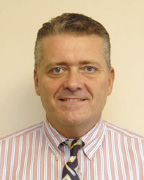The use of LEED for laboratory facilities was conceptualized by the U.S. Green Building Council more than ten years ago. At that time, achieving LEED certification for such energy-hungry facilities seemed to be a daunting challenge because they would be subject to the same standards as less complex buildings. Since that time, however, major laboratory facilities have begun to routinely achieve all levels of LEED certification. While high power and water consumption are difficult to avoid in these facilities, a number of specialized techniques have been developed to allow them to minimize energy use.
To qualify for the Solar Reflectance Index (SRI) credit under LEED criteria, a building's rooftop must have at least a 70% SRI. In conventional construction, this is often achieved through the use of a white or light-colored PVC roofing fabric. However, it's not uncommon for up to 70% of a laboratory facility's roof area to be dedicated to air handling equipment, which leavings little room for the reflective membrane. To circumvent this concern, prudent engineers have begun to incorporate the same light-colored PVC material into the specifications for the air handling equipment. In this manner, the designers of the facility can ensure that the reflectivity of the rooftop is not lost due to the larger equipment footprint.
Another challenge for reducing energy consumption is the facility's demand for continuous air changes and environmental air flow. Due to this, it is not always possible to lower energy use at night through the nighttime setbacks. We have learned that while the continuity of air flow is critical in labs, the temperature of that air may often not be. Provided that the recovery of reduced interior temperatures is managed in the winter, engineers can design the system with as much as a 20-degree nighttime temperature variation into the sequence of operations.
The effective use of solar reflective materials and the ability to add some flexibility into a facility's air flow requirements are just a few of the ways that the energy requirements of research facilities can be greatly reduced. These techniques are allowing even the most complex laboratory buildings to achieve LEED certification, and we are now seeing such methods adapted to more conventional buildings outside of the life sciences industry.
Robert Reihl, CHC, LEED AP is a facilities manager for A/Z Corp., North Stonington, CT
Tags:







